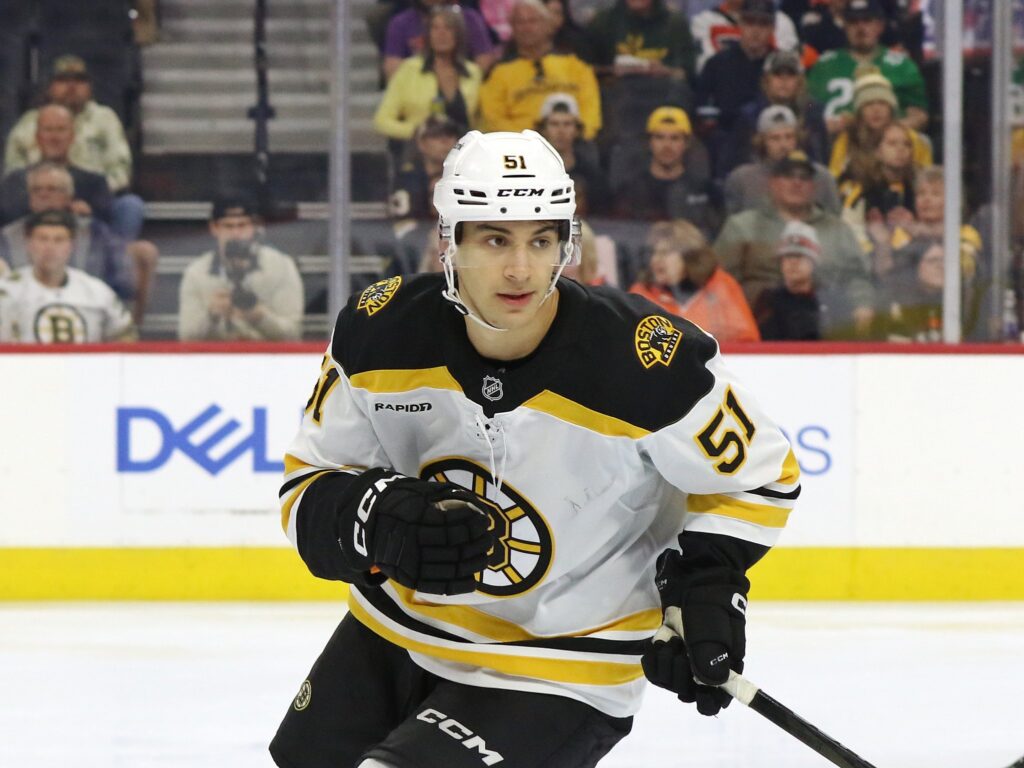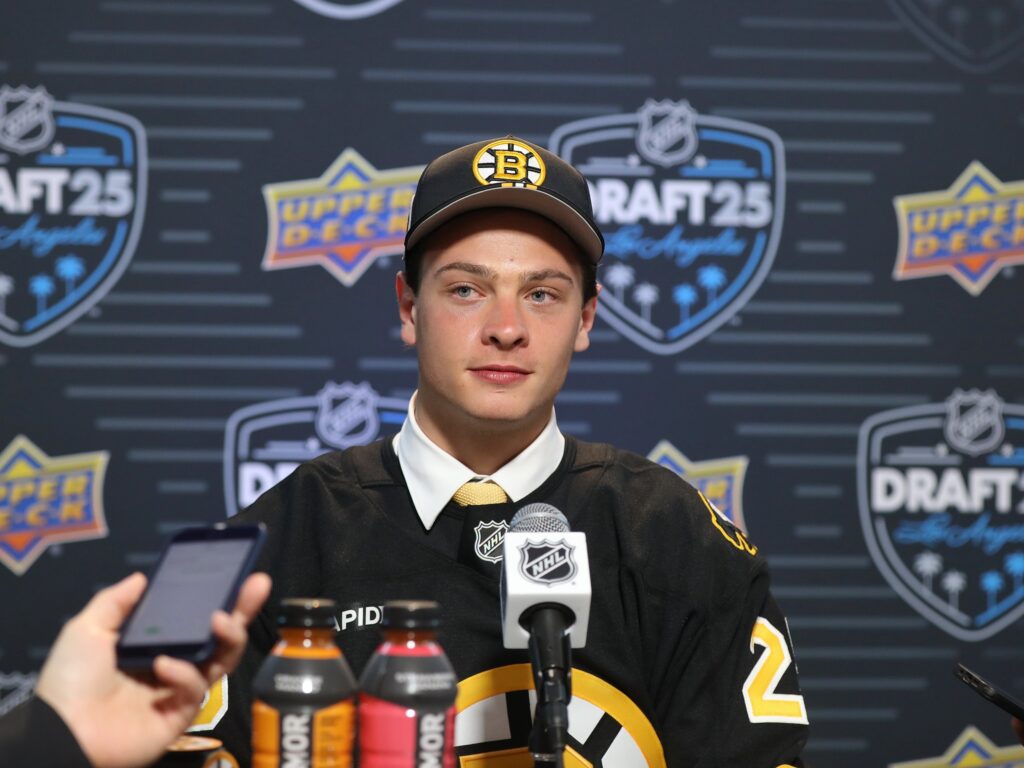For years, analyzing the Boston Bruins’ prospect pool was an exercise in bleakness. It was the NHL’s barren wasteland, a system consistently ranked at or near the very bottom of the league. Pundits, including the respected analysts at The Athletic, had them pegged dead last—32nd out of 32 teams—for two consecutive seasons. It was a running joke, a testament to years of trading away draft picks for “win-now” pieces. But the hockey world is cyclical, and tides, even in the frozen rinks of the NHL, have a way of turning.
Under the often-scrutinized leadership of General Manager Don Sweeney, the Bruins have quietly and effectively begun to restock the cupboards. Through savvy drafting, shrewd trades, and a little bit of developmental luck, the system is no longer a punchline. It’s a pipeline that is, as one analyst put it, “starting to trend in the right direction a bit.” And “a bit” might be the understatement of the year. The transformation has been dramatic, vaulting the Bruins from the league’s cellar to a respectable 18th in one ranking and 20th in Corey Pronman’s post-draft analysis. The future in Boston, once a murky and uncertain fog, is starting to look a whole lot brighter.
The Great Re-Stock: Climbing Out of the Abyss
The turnaround wasn’t accidental. It was a concerted effort, punctuated by an exceptional 2025 NHL Entry Draft that has become the cornerstone of this new foundation. This wasn’t just about adding a few decent players; it was about fundamentally altering the trajectory of the franchise’s future. The Bruins are now armed with an arsenal of draft capital, including four first-round picks over the next two years, giving Sweeney the ammunition to either draft elite talent or acquire impactful young players.
Also on the EDGE – Can a Healthy Bruins D-Corps Erase the Memory of 2024-25?
This influx of talent is a direct result of strategic asset management. While the big club has made moves to remain competitive, the front office has managed to build for the future simultaneously—a difficult tightrope to walk in a hard-cap league. The days of sacrificing the farm for marginal rentals appear to be over, replaced by a more balanced approach that has breathed life back into a once-dormant system.
The Crown Jewel: James Hagens and the Hope for a True No. 1
Every franchise rebuild needs a centerpiece, a player with the kind of “star potential” that can redefine a team’s offensive identity for the next decade. For the Boston Bruins, that player is James Hagens. Selected 7th overall in the 2025 draft, Hagens isn’t just another good prospect; he’s described as a “legit No. 1 center prospect,” the kind of talent the organization hasn’t drafted and developed since Patrice Bergeron.

At just 18 years old, Hagens has already drawn lofty comparisons. Scott Wheeler of The Athletic places him at No. 8 among all drafted NHL skater prospects and likens his game to that of Utah Mammoth star Logan Cooley. It’s an apt comparison. Hagens is an offensive dynamo who combines exceptional skating with elite puck-distribution skills, making him a deceptive and unpredictable threat every time he’s on the ice.
His freshman season at Boston College was good. Competing in the notoriously tough Hockey East conference, Hagens put up 37 points (11 goals, 26 assists) in 37 games, showcasing his ability to produce against older, stronger competition. His decision to return to BC for his sophomore year is a sign of maturity, allowing him to further refine his game and add strength to his frame before making the leap to the pros. Bruins fans should be patient, but not for long. Hagens is expected to make an immediate impact at the NHL level in the “not-too-distant future,” and the hope is that he will anchor Boston’s top line for years to come.
Reinforcements Down the Middle
While Hagens is the headliner, the Bruins’ newfound strength is their incredible depth at the center position. Sweeney has assembled a diverse and formidable group of pivots who bring different skills to the table.
Leading the charge of the NHL-ready crop is Fraser Minten. Acquired in a 2025 trade deadline deal with the Toronto Maple Leafs, Minten is the quintessential modern two-way center. He plays an exceptionally smart, detailed, and responsible game that coaches dream of. While he might not have the offensive ceiling of Hagens, he possesses a top-six upside and is already projected to “excel in a No. 3 role.” He’s physically mature and handles the rigors of the pro game with ease. Expect Minten to be in a serious battle for a full-time roster spot on the NHL club this coming season.
Joining Hagens at Boston College is another promising center, William Moore. Drafted 51st overall in 2025, Moore brings excellent size to the table at 6-foot-2. Like Minten, he’s a responsible two-way player who is particularly effective in the dirty areas around the net. His ceiling is likely that of a high-end third-line center, a crucial role for any contending team. The one-two punch of Hagens’ skill and Moore’s two-way game at the NCAA level will be a fascinating storyline to follow.
The Crossroads Crew: Make-or-Break Seasons Loom
For a few key prospects, the upcoming season carries significant weight. It’s a tipping point where potential must translate into consistent performance, or their future with the organization could become uncertain.
Also on the EDGE – Bruins in the Hot Seat: Which Players Need a Big Bounce-Back Season?
No one fits this description better than Matthew Poitras. The 21-year-old forward burst onto the scene two years ago, making it impossible for the Bruins to send him back to the OHL. He’s one of the “brightest youngsters” in the system and has shown he can hang at the NHL level. However, a season-ending shoulder surgery last February cut his development short. Now, with the addition of the NHL-ready Minten, the internal competition at center has ramped up considerably. Wheeler projects him as a potential “middle-six/PP2 forward,” but this is truly a “make-or-break” year for Poitras to prove he belongs in that conversation permanently.


Then there is the enigma that is Fabian Lysell. The 2021 first-round pick has tantalized fans and scouts with flashes of elite skill, speed, and creativity. He finally made his NHL debut last season and even potted his first goal. Yet, his path has been slower than anticipated, largely due to persistent concerns about his defensive play and consistency. Now 22, the clock is ticking for Lysell. Reports have even surfaced that the Bruins are shopping the skilled right winger, hoping to maximize his trade value before it diminishes. This season is his best—and perhaps last—chance to prove he can be a reliable top-six contributor in Boston.
Cracks in the Foundation: Addressing the Deficiencies
For all the newfound optimism, the prospect pool is far from perfect. While Sweeney has masterfully addressed the center position, significant holes remain elsewhere in the system.
The most glaring weakness is in net. The goaltending depth is, to put it bluntly, “lacking big time.” Philip Svedebäck, a fourth-round pick from 2021, has been a workhorse at Providence College and shows potential as a future NHL backup, but beyond him, the pipeline is thin. The Bruins are one injury away from a serious depth crisis in goal.
Furthermore, the wings lack high-end, dynamic talent beyond Lysell. Will Zellers, acquired in a 2025 trade, is an intriguing prospect coming off a massive 44-goal season in the USHL, but he’s still a project. On the back end, the system is flush with size and physicality but lacks a true puck-moving, transitional defenseman. Most of the blueline prospects, like Frédéric Brunet, project as steady, bottom-pairing defenders rather than minute-munching, puck-rushing threats.
The Verdict: A Brighter Tomorrow
The Boston Bruins’ prospect pool has undergone a remarkable transformation. In just a couple of years, it has evolved from a league-worst liability into a respectable, middle-tier system with a legitimate blue-chip talent in James Hagens at its core. The depth down the middle is now arguably a top-10 strength in the entire league.
The work is not done. Don Sweeney still needs to find creative ways to inject skill on the wings, add a dynamic defenseman, and bolster the goaltending pipeline. But for the first time in a long time, there is a tangible wave of talent on the horizon. The future is no longer something to be dreaded in Boston; it’s something to be genuinely excited about.
Created with the aid of Gemini AI
